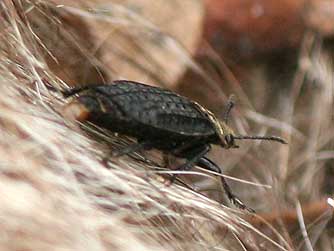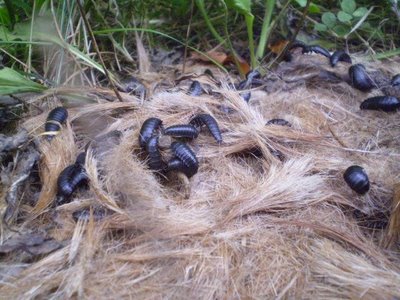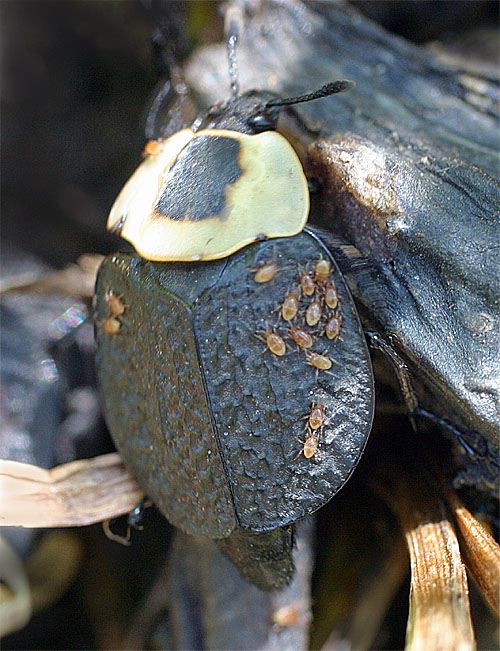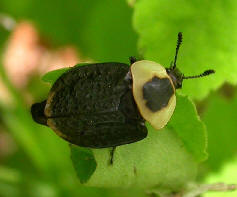|
|
Carrion
Beetle and
|
||||
|
Carrion beetles are a family of beetles that feed on the bodies of dead and decaying animals. When an animal dies in the woods, it immediately begins to decompose or rot. Carrion beetles eat the rotting flesh of dead animals so they are a very important kind of beneficial bug called "decomposers". If you remember the meaning of two different words, you will remember why this beetle is a beneficial bug.
Carrion beetles and other decomposers are important because they get rid of dead matter by eating it and breaking it down into smaller pieces that can be placed back into the ecosystem. The small pieces of dead animals become nutrients that other animals and plants can feed on. Some kinds of Carrion beetles actually bury small animal carcasses so that they can lay their eggs on it (the eggs will be safer under the ground). When carcasses are buried, they decompose faster and don't smell as much - helping to keep our environment cleaner.
Carrion beetles are decomposers during their entire life span. The adults work in groups or colonies to decompose animal flesh that is bloated, or decayed. The larvae mainly live in dead carcasses when they are decaying or are dried up. That is because the larvae (not yet fully grown beetles) eat maggots. Maggots are also decomposers that live in dead bodies of animals. Carrion beetles and maggots eat they same thing, so they compete with each other for food. But Carrion beetles have a secret weapon they use to get rid of some of the maggots and get more food for themselves. Carrion beetles carry tiny little mites on their backs. The mites travel with the beetle to a dead carcass, where they eat the eggs of maggots and the smallest maggots, creating more space and food for Carrion beetles. Some scientists think that the mites take care of Carrion beetles by cleaning off bacteria the the beetle picks up from living on dead animals. Below is a picture of a Carrion beetle with mites on its back.
Carrion Beetles have many different weapons that they use to protect themselves against attack by other predators. Their defense systems also allow them to live comfortably and grow in different kinds of environments. Many Carrion beetles blend into their environment and can not be seen easily because they are dark black and brown in color. However, there are other Carrion beetles that have bright colors like orange, yellow or red. This bright coloring warns predators to keep away. Animals with bright colors can be poisonous, so the bright colors of some Carrion beetles make predators think they are poisonous. Carrion beetles also have chemical defenses. They secrete a strong, smelly odor that irritates other bugs and small animals. They can even spray the odor at predators to keep them away. They move the end of their abdomen around and spray in all directions. Carrion beetles come in many sizes. Some are very small while others can get as big as 1.4 inches (or about 35 mm). The average size of a Carrion beetle is 1/2 inch. They have flat, flexible bodies that allow them to crawl under dead animals. Carrion beetles are found all over the world. There are 46 different kinds in North America, many of which are found in the United States.
|



 American Carrion Beetle
American Carrion Beetle